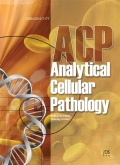Authors: Zhou, You-xin | Chen, San-song | Wu, Ting-feng | Ding, Da-dong | Chen, Xiong-hui | Chen, Jin-ming | Su, Zuo-peng | Li, Bin | Chen, Gui-lin | Xie, Xue-shun | Dai, Yan-fang | Wei, Yong-xin | Du, Zi-wei
Article Type:
Research Article
Abstract:
Background: The gliomas represent the most common primary malignant brain tumors; however, little is known about the molecular pathogenesis of these tumors. Recent research reveals that the oncogenesis and development of gliomas have a close relation to the overexpression of several oncogenes and the inactivation of tumor suppressor genes. Whether the RING finger protein, RNF138, a newly discovered protein, plays a role in glioma oncogenesis is unknown. The present study investigates the expression levels of RNF138 mRNA in glioma samples and noncancerous brain samples and its function in the human glioma cell line U251. Methods: RT-PCR was used to ascertain
…the expression of RNF138 mRNA in the glioma cell lines U251, SHG44, U87, A172, and U373. The RNF138 mRNA expression levels of 35 pathological confirmed glioma samples (Grade I – 4 cases, Grade II – 13 cases, Grade III – 11 cases, and Grade IV – 7 cases) and five noncancerous brain tissue samples were analyzed by real-time quantitative PCR. By RNA interference (RNAi) with the lentivirus vector system, the expression of RNF138 was inhibited in the human astrocytomas-glioblastoma multiforme cell line U251. The effects of RNF138-knockdown on cell proliferation were assessed by Cellomics, and cell cycle and cell apoptosis were assessed by FACS. Results: The RNF138 mRNA is expressed in the five glioma cell lines, and its expression level is significantly higher in glioma tissue than in noncancerous brain tissue. By down-regulation of RNF138 expression, U251 cell proliferation was inhibited and cell apoptosis increased. At the same time, S stage cells lessened and G2 stage cells increased. Conclusion: The RNF138 gene is highly expressed in glioma tissue and glioma cell lines. It plays an important role in glioma cell proliferation, apoptosis, and cell cycle.
Show more
Keywords: RNF138, U251, RNA interference, proliferation, apoptosis
DOI: 10.3233/ACP-2011-0051
Citation: Analytical Cellular Pathology,
vol. 35, no. 3, pp. 167-178, 2012
Price: EUR 27.50





